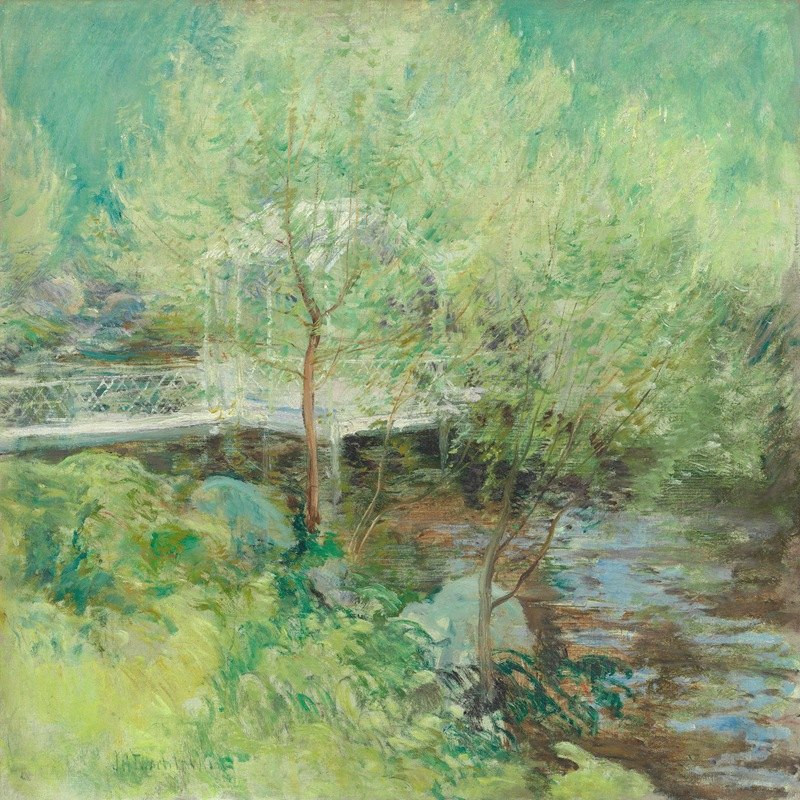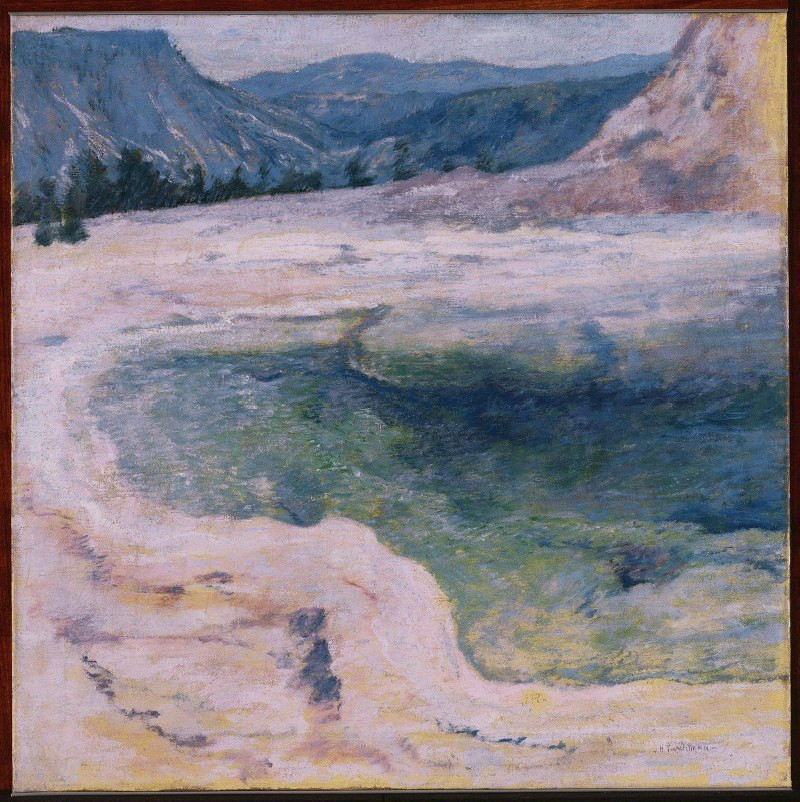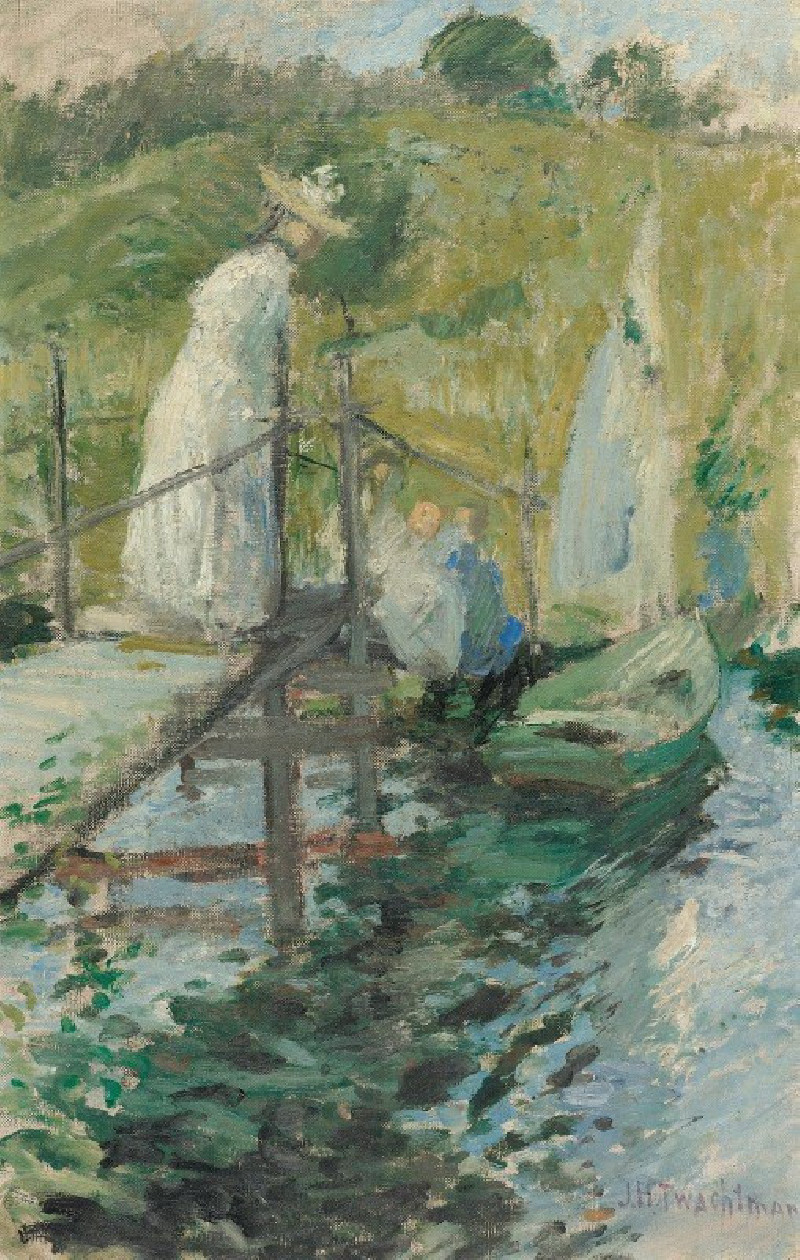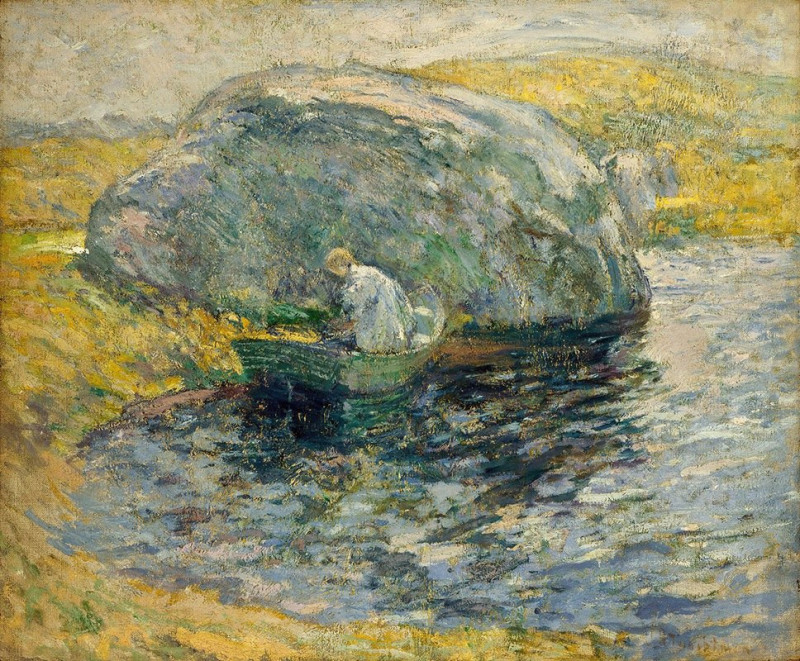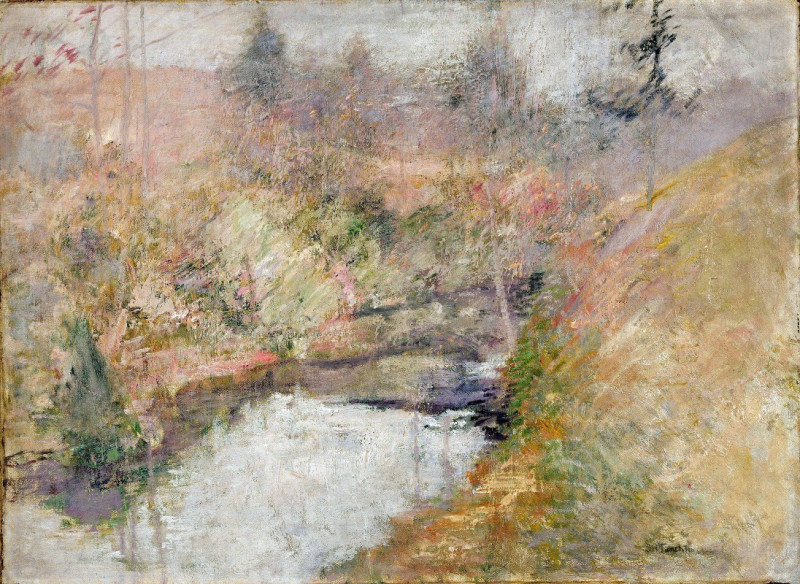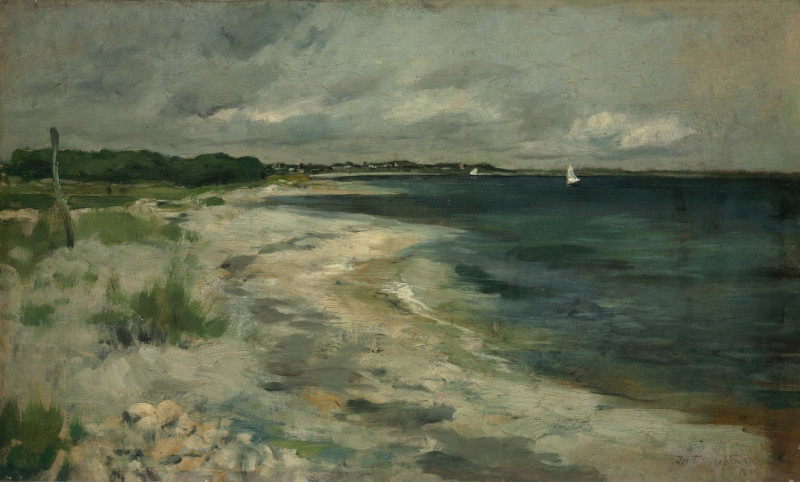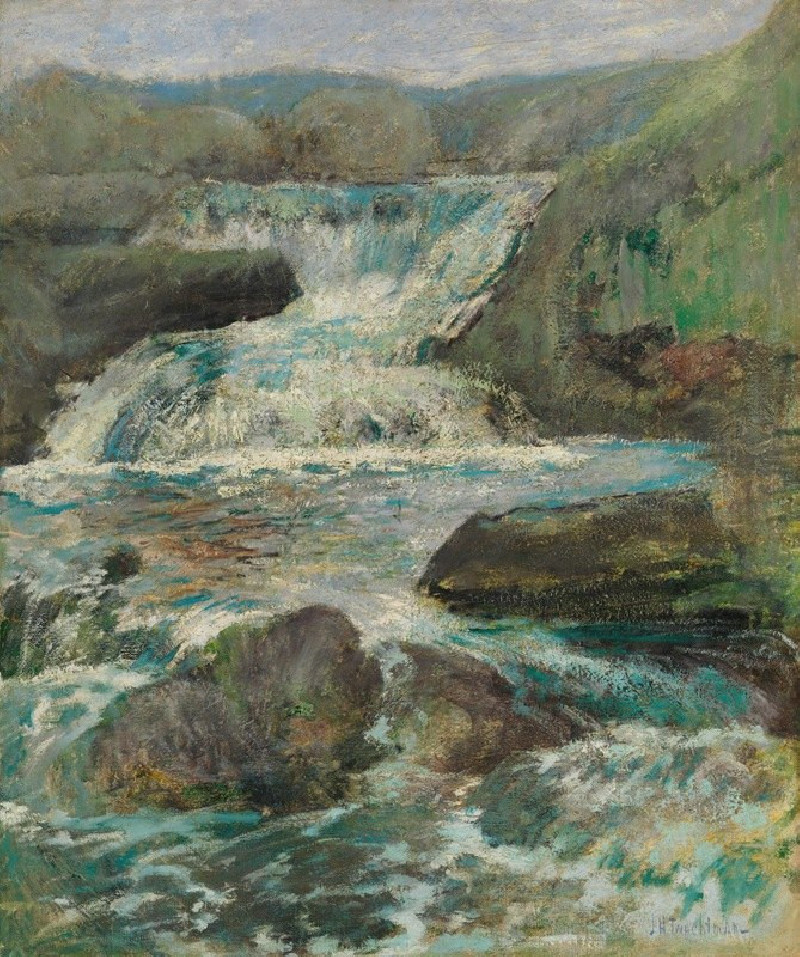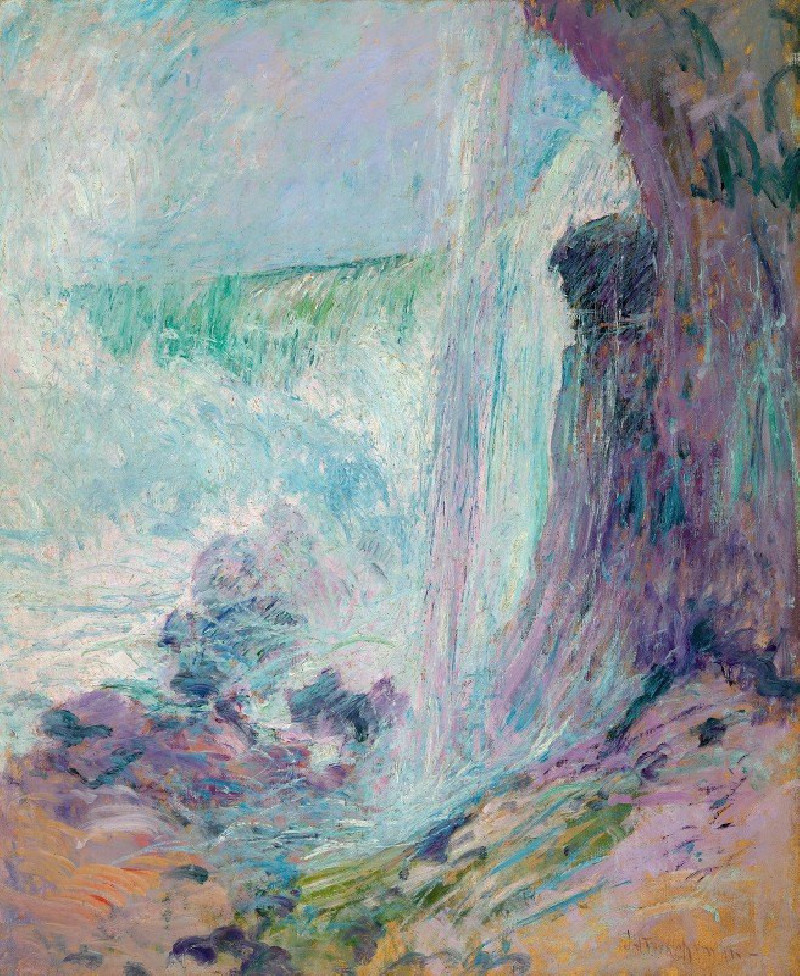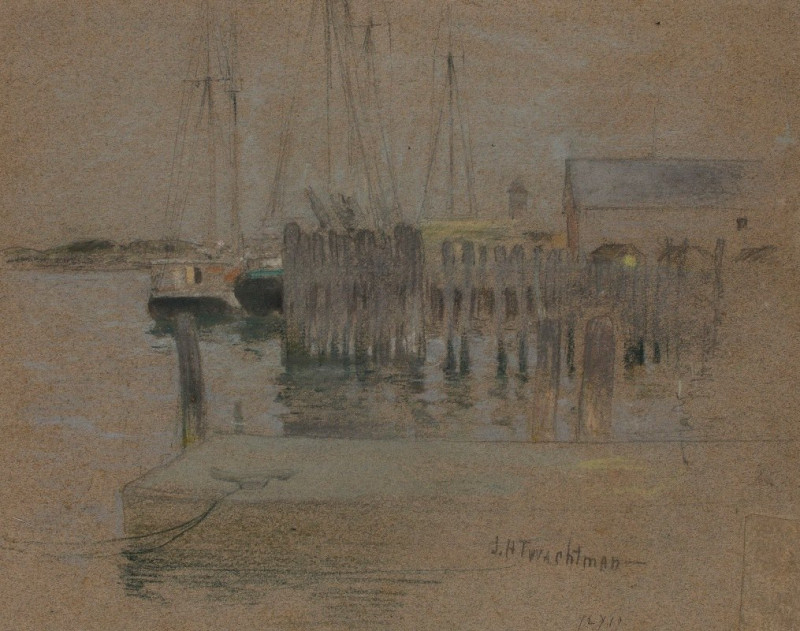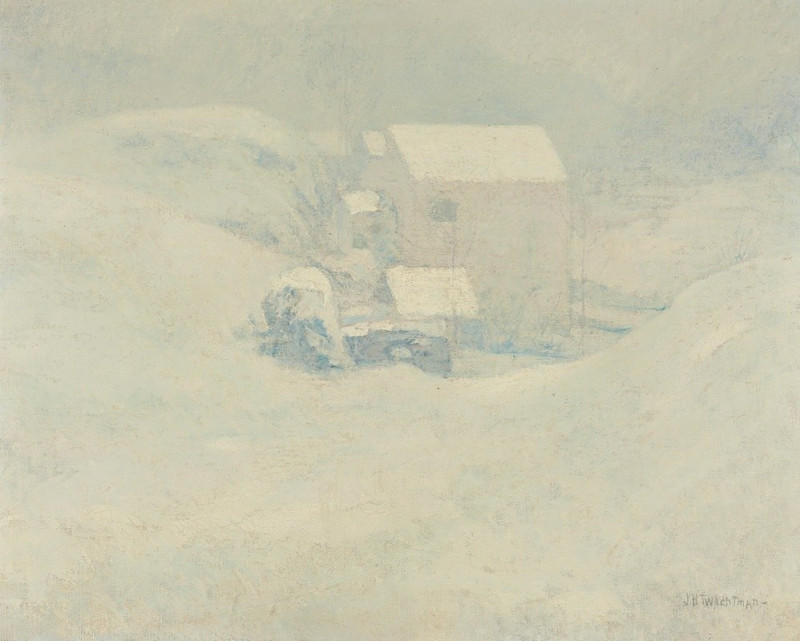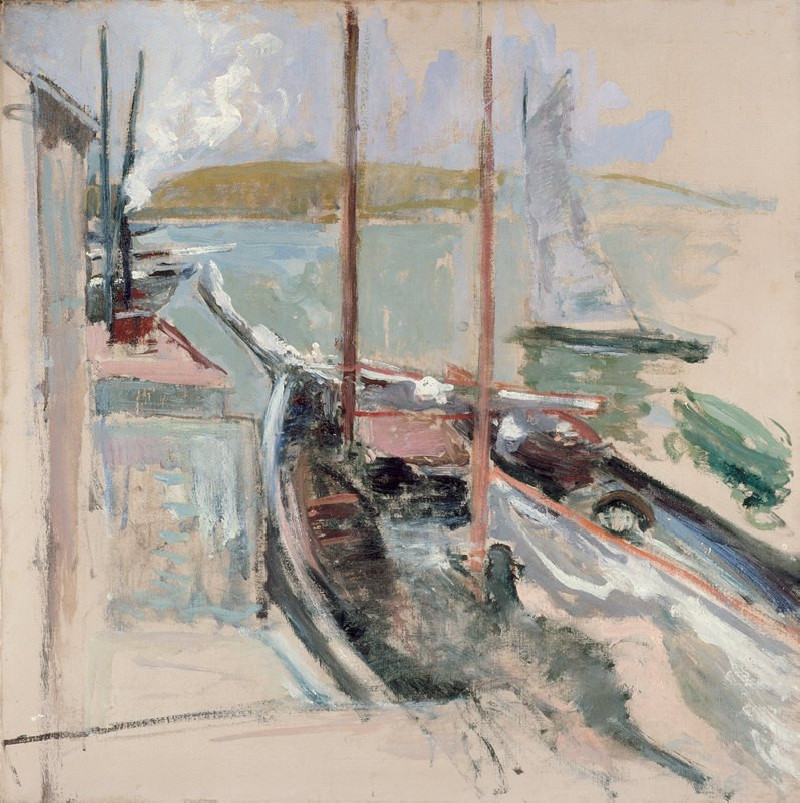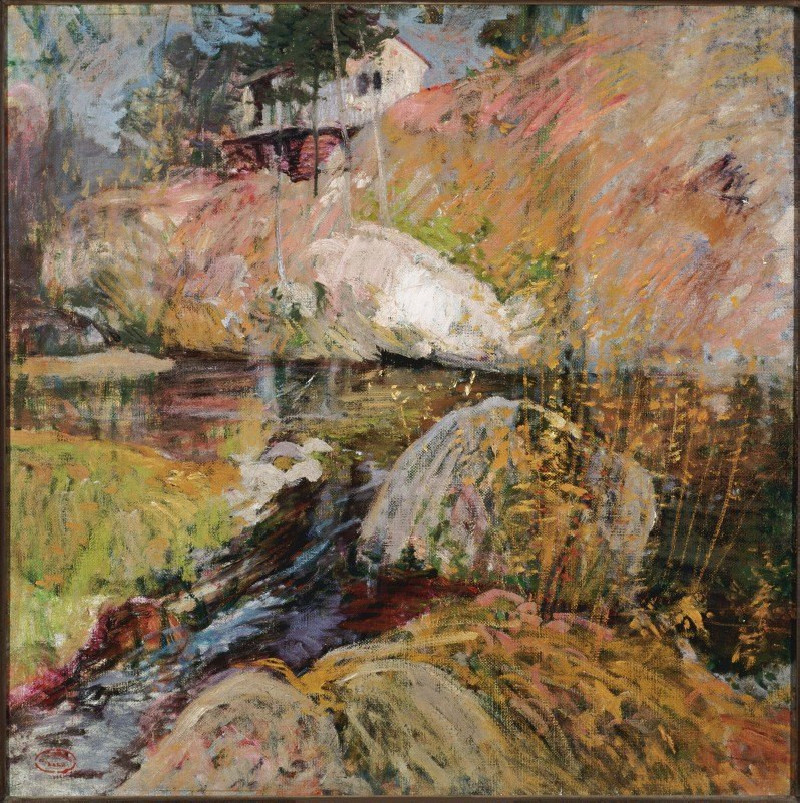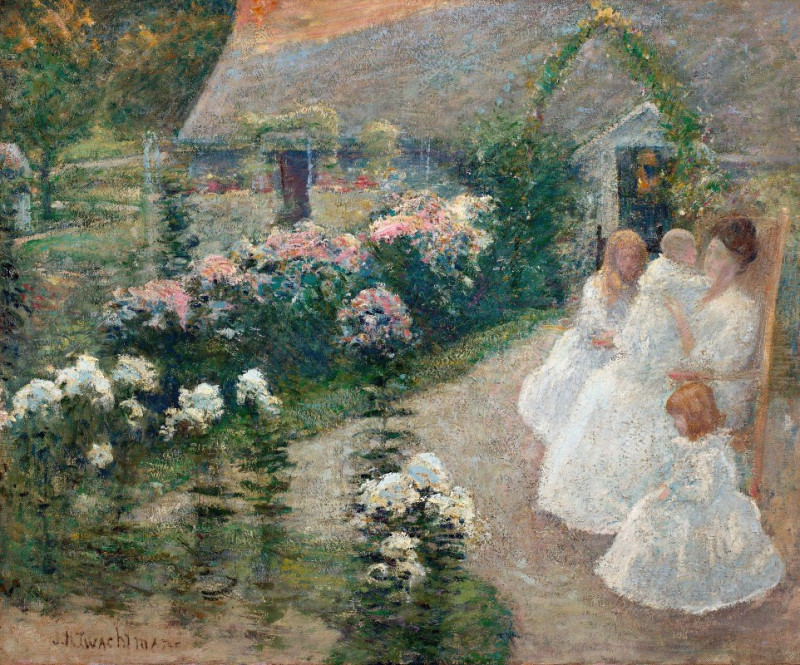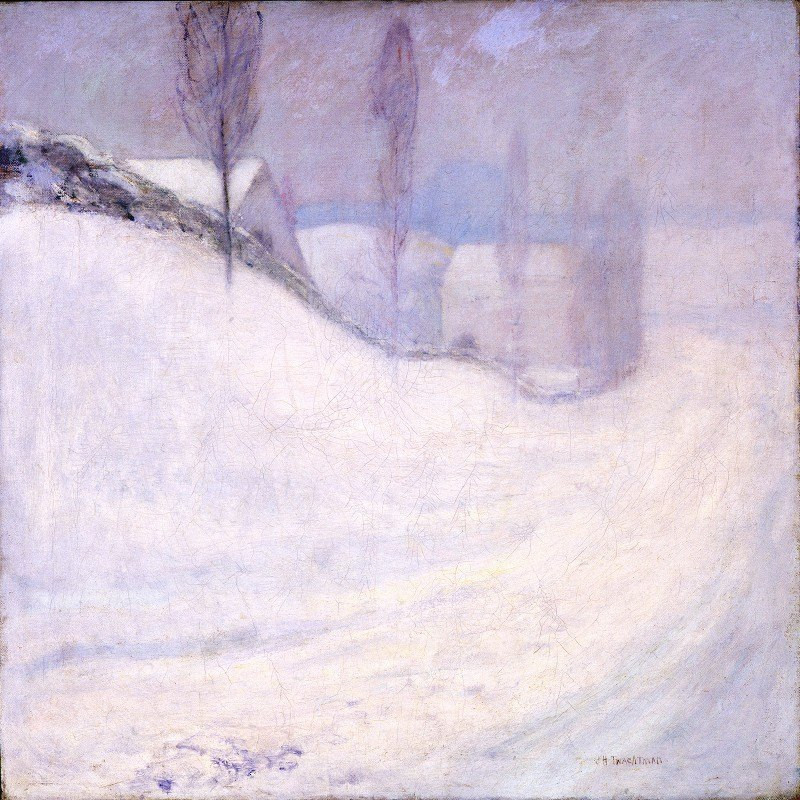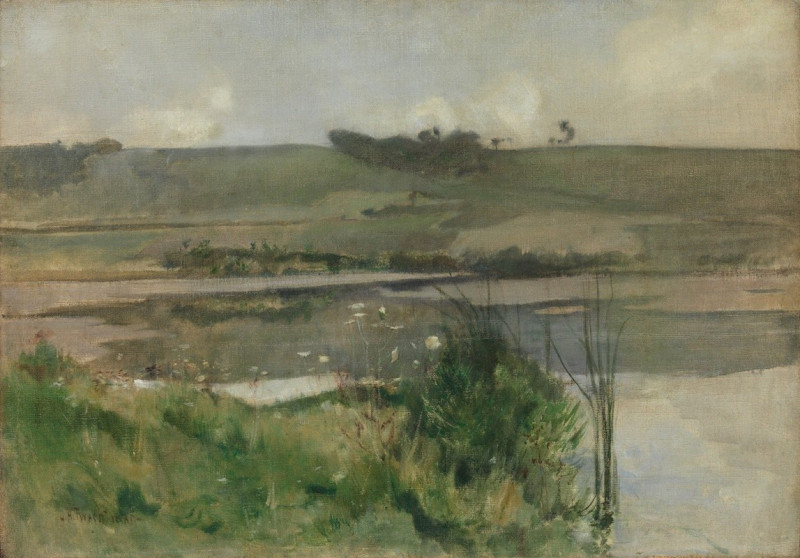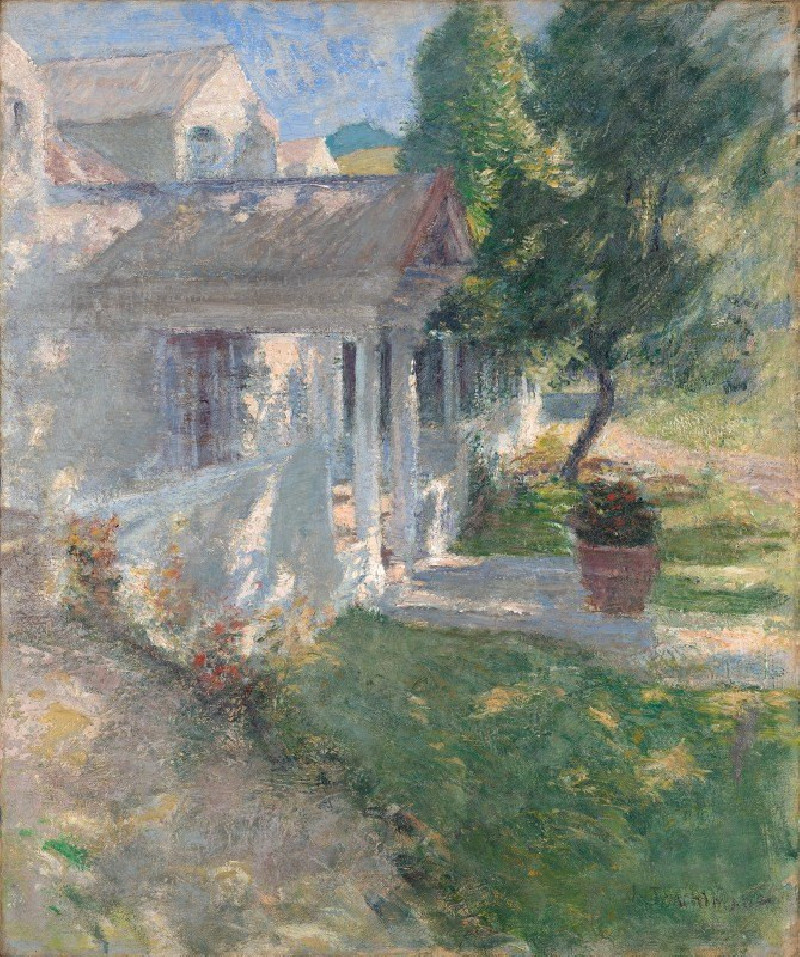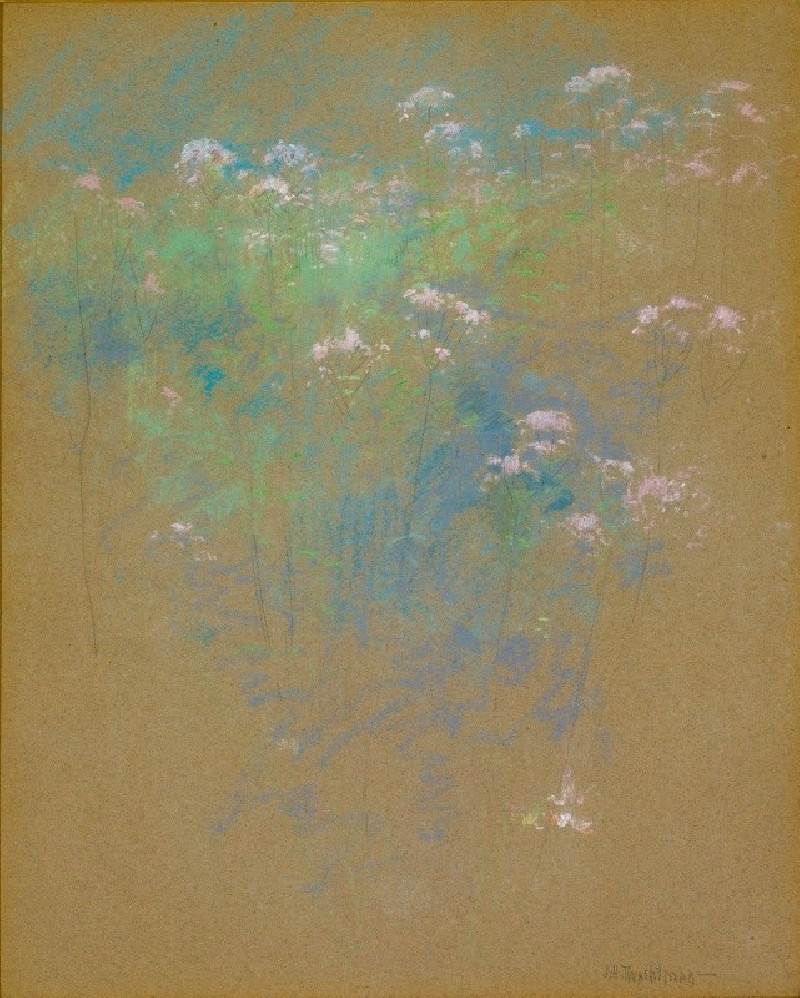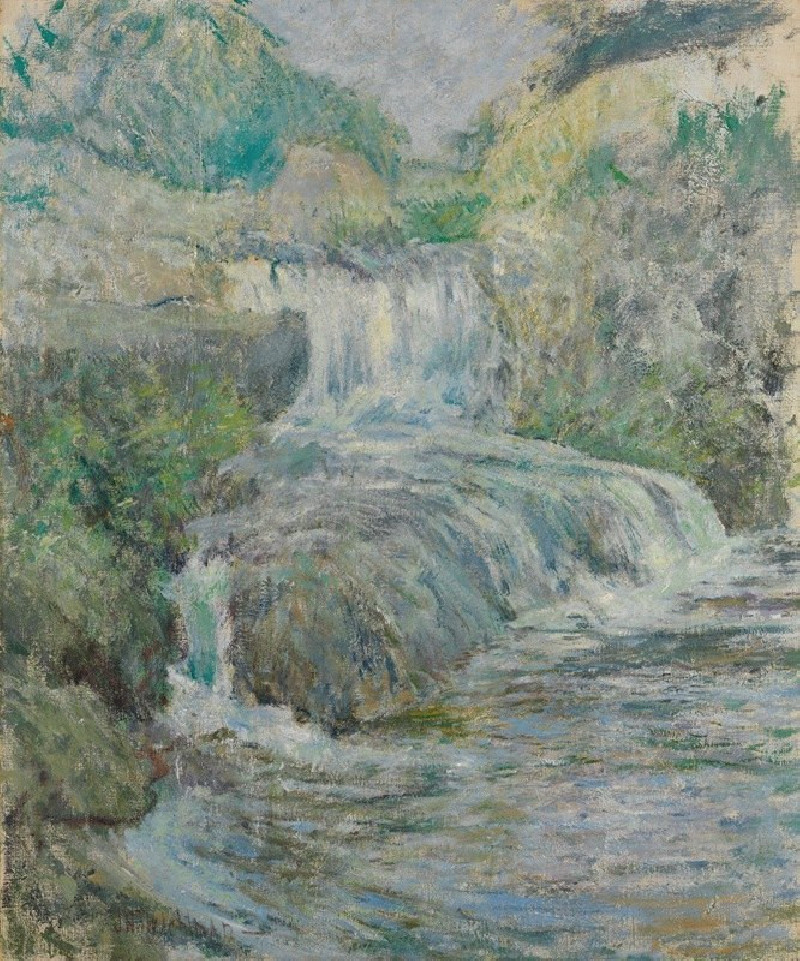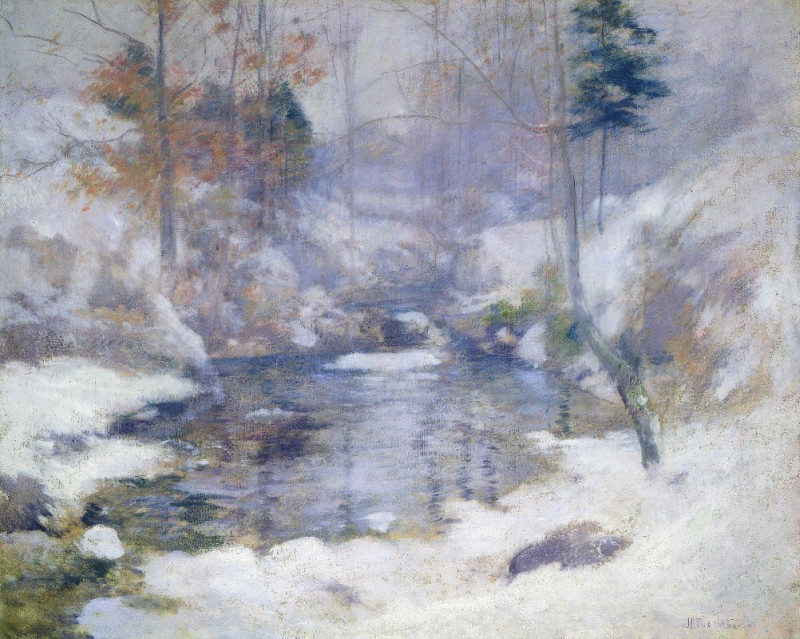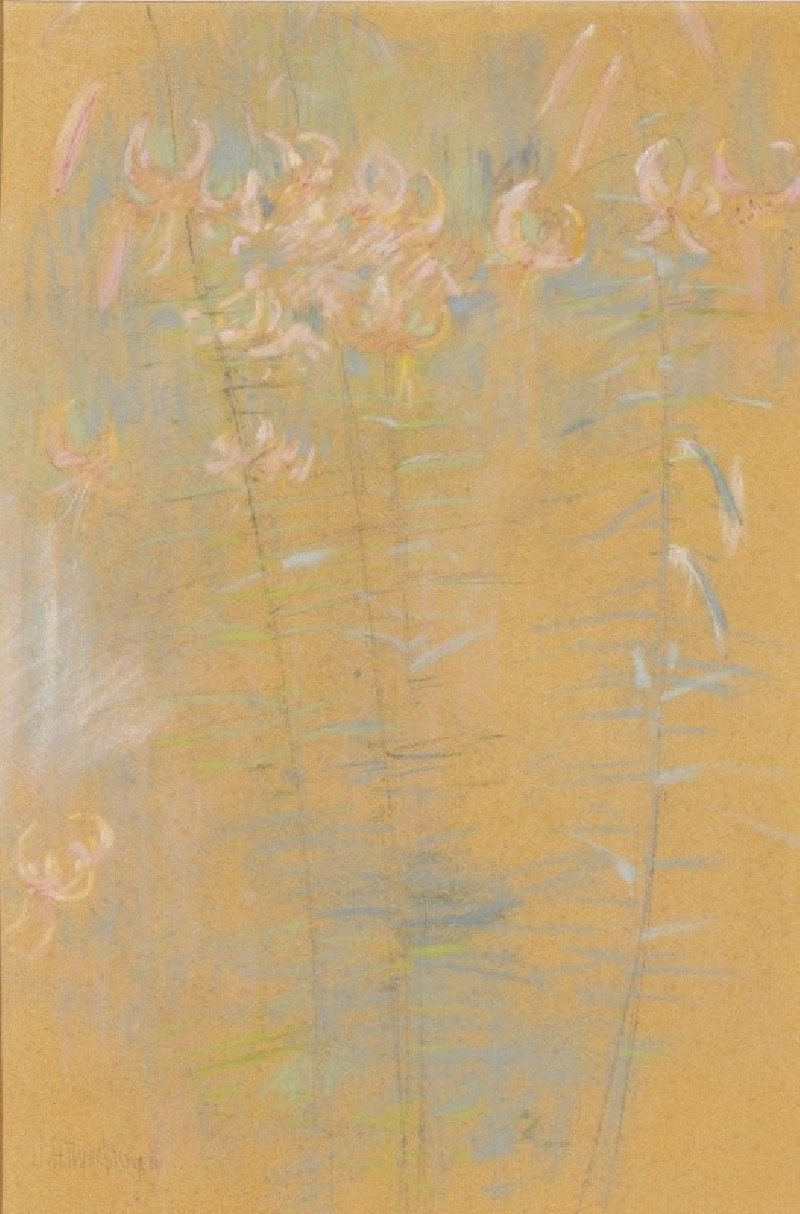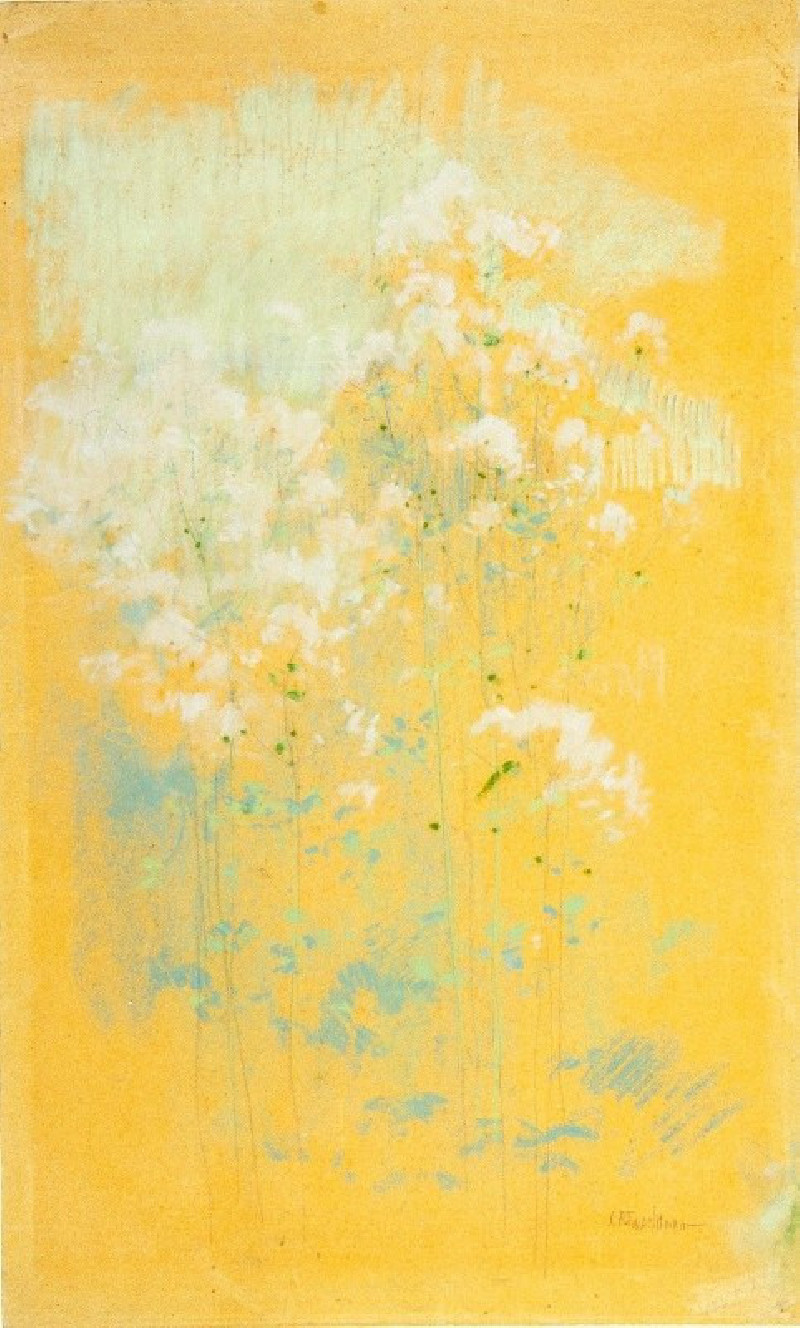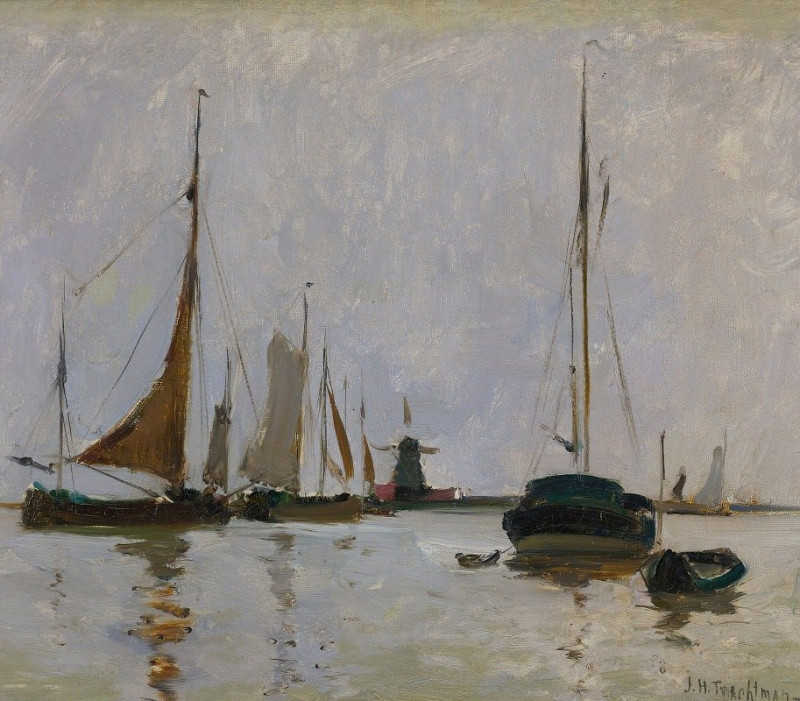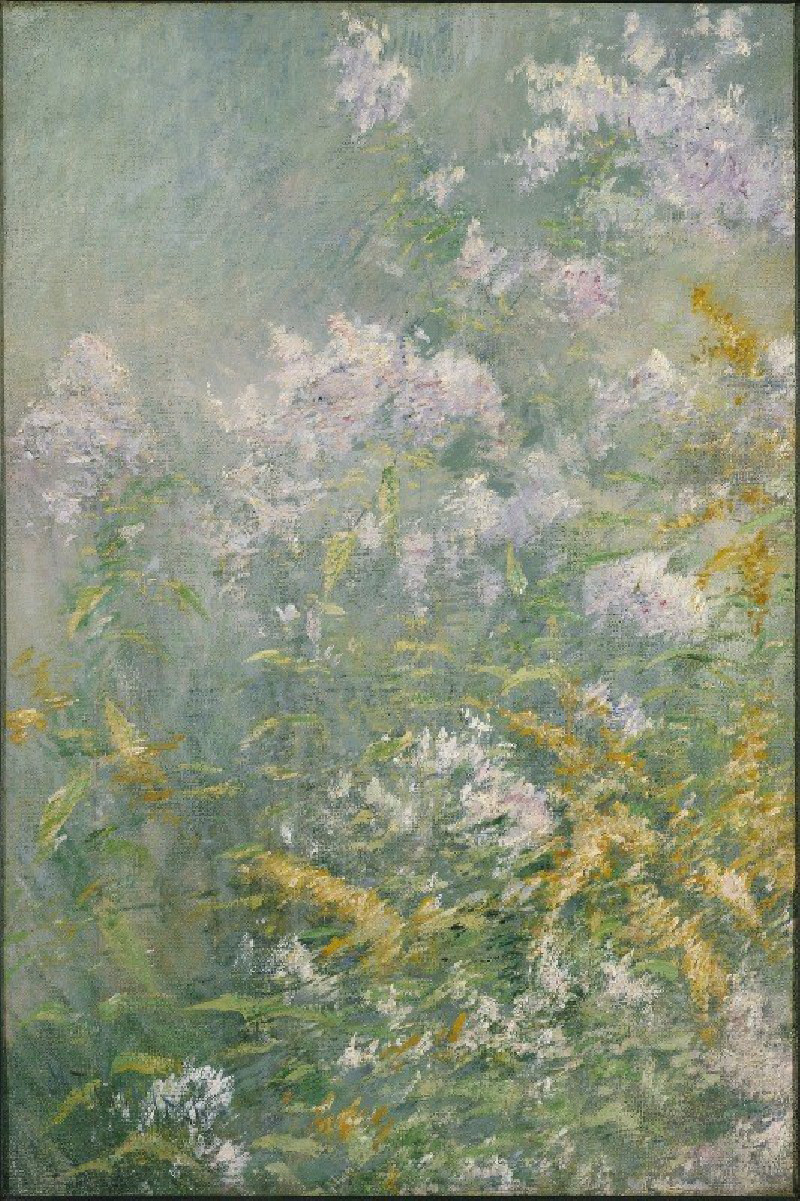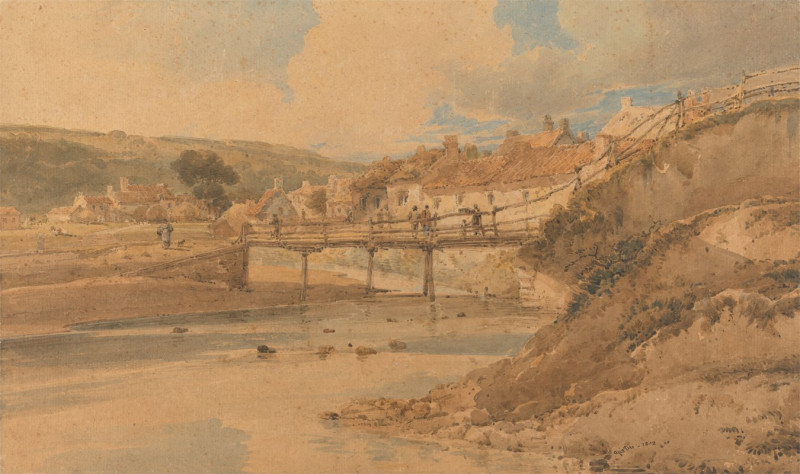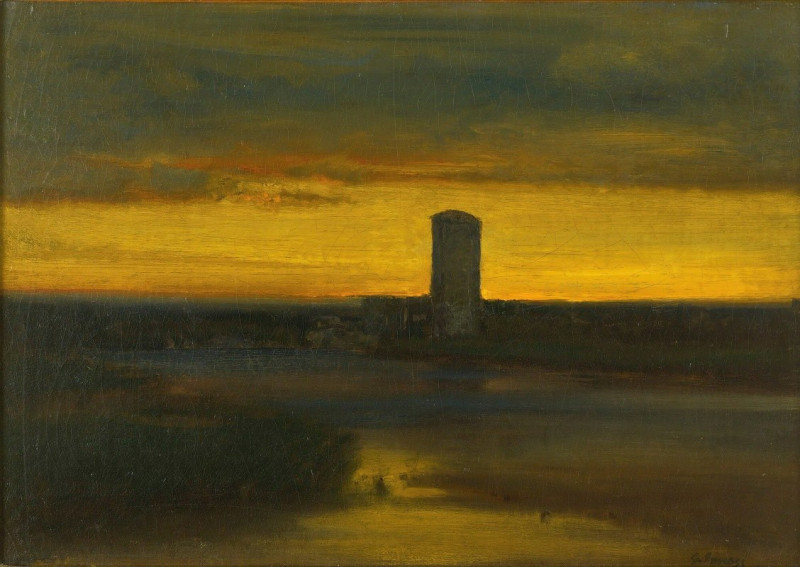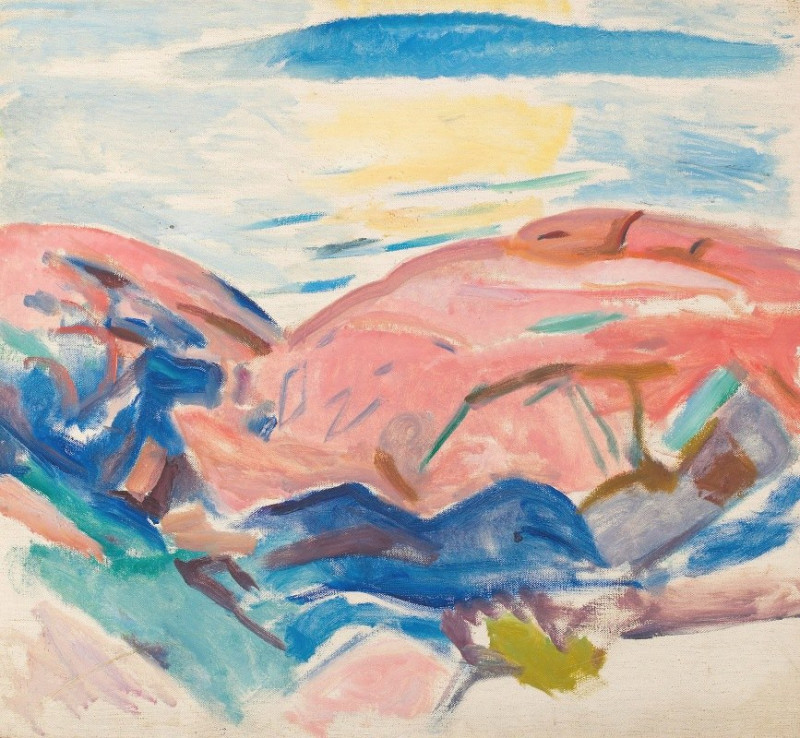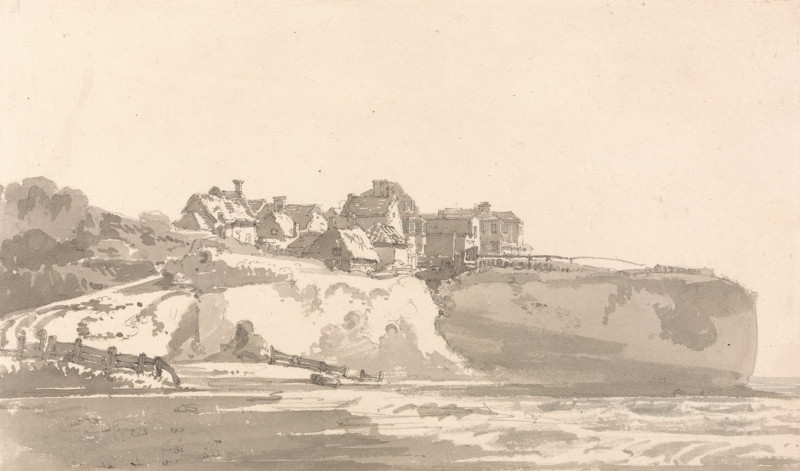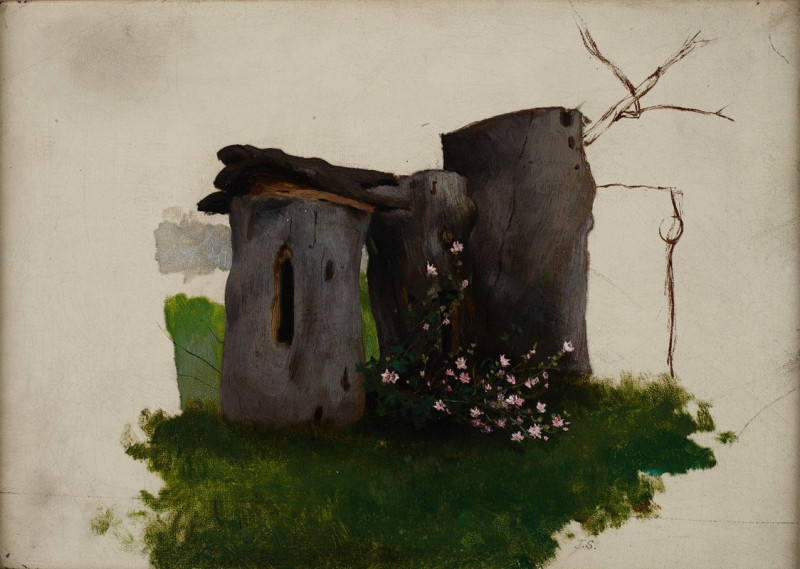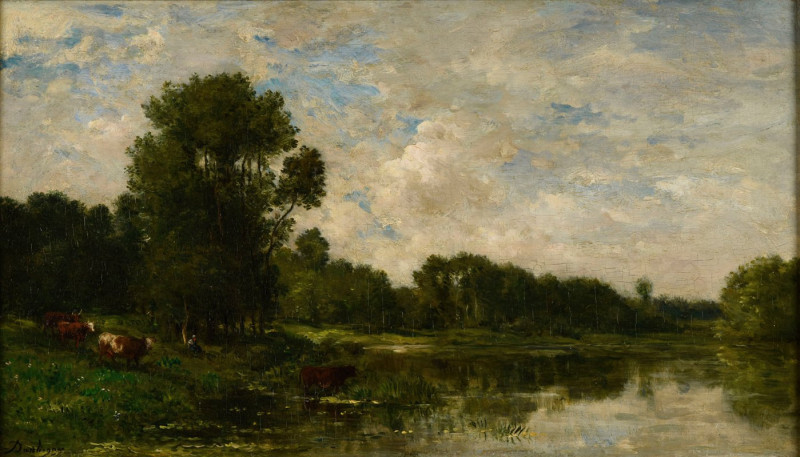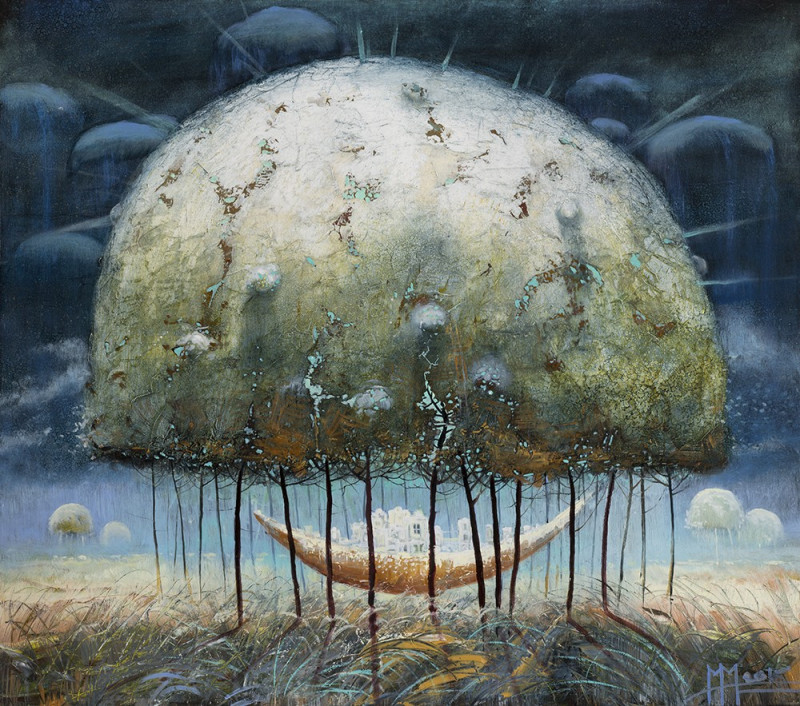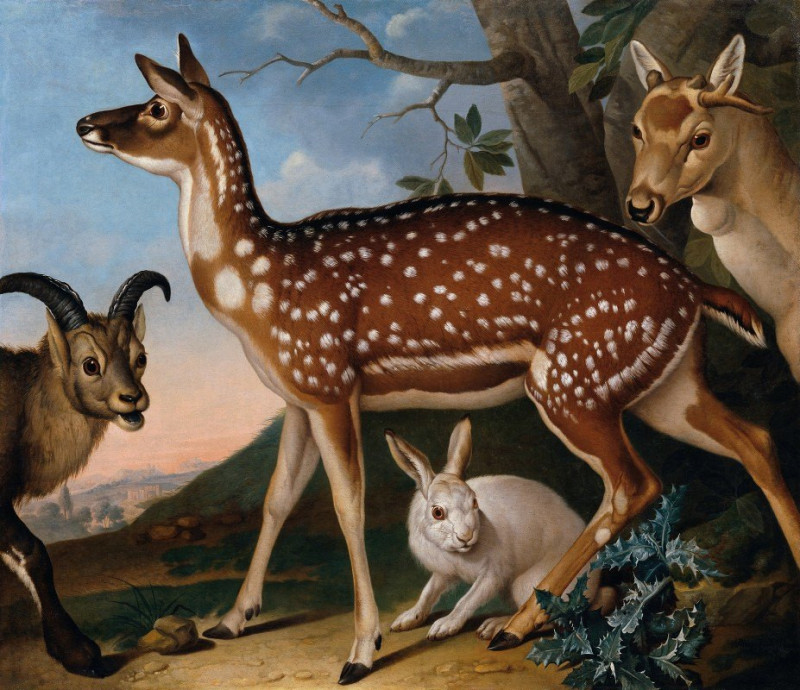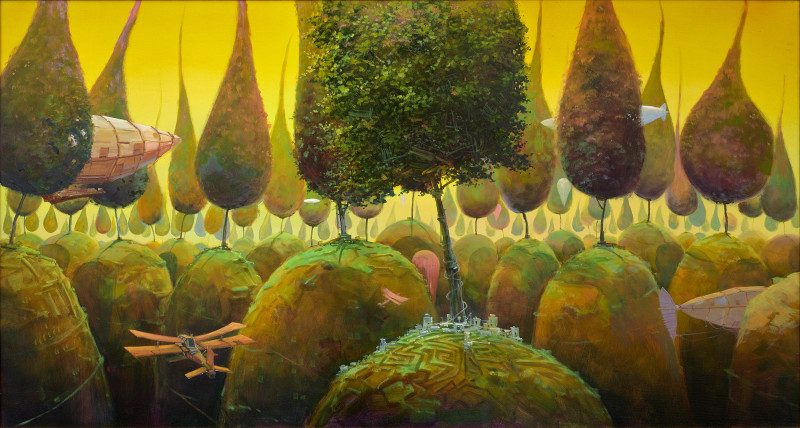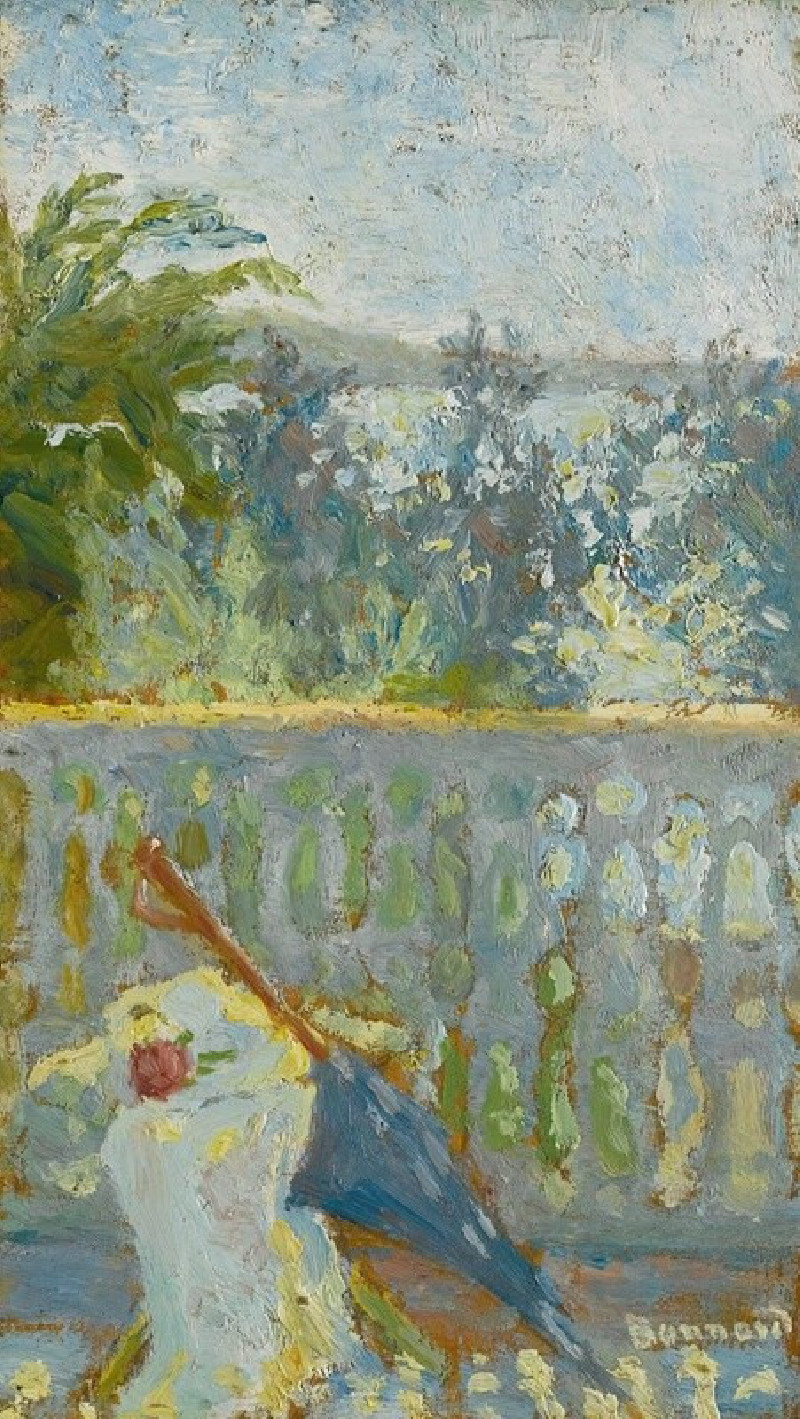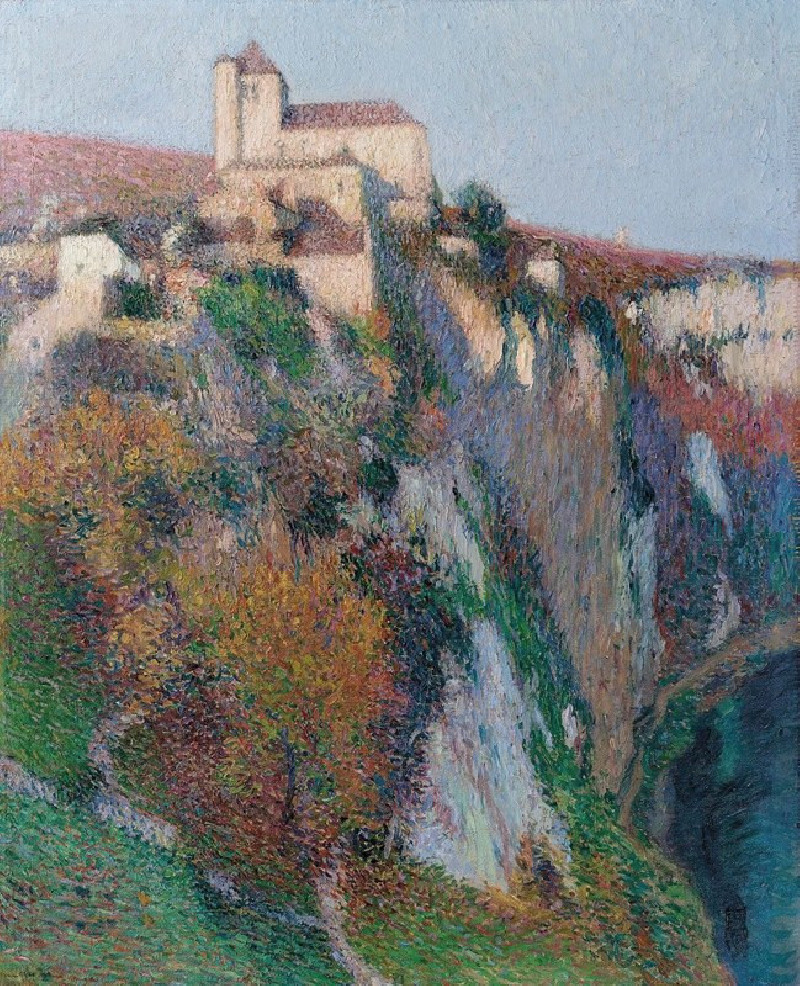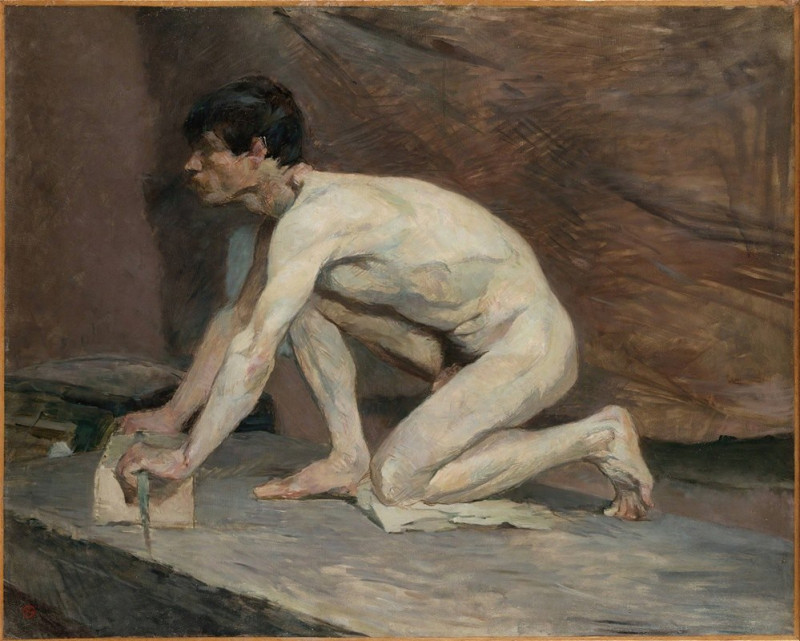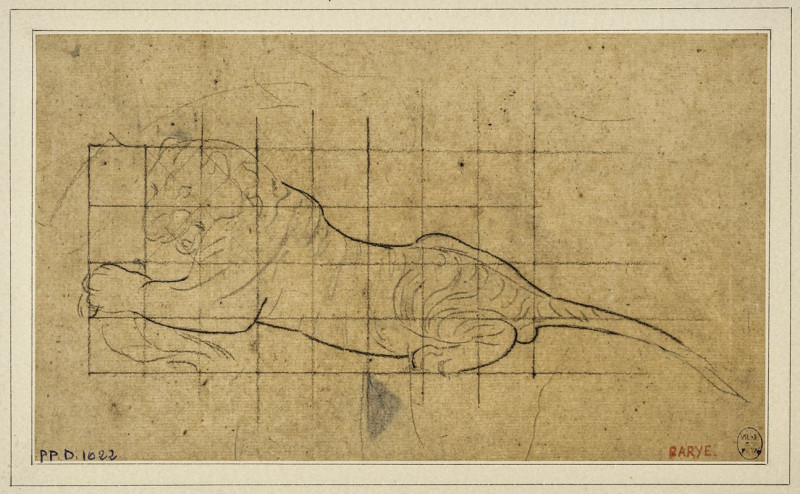The White Bridge (after 1895)
Technique: Giclée quality print
Recommended by our customers
More about this artwork
Welcome to the serene landscape invoked in "The White Bridge," an exquisite painting by American Impressionist John Henry Twachtman. Created after 1895, this artwork captures the essence of a peaceful, natural setting, harmonizing the fluid dynamics of water and foliage through the artist's distinct brushwork.The scene is centered around a delicate white bridge that arches gracefully over a tranquil stream. Twachtman masterfully employs a palette of soft greens, blues, and whites to convey the freshness and brightness of a vibrant spring or early summer day. The river, dappled with reflections of the sky and surrounding vegetation, adds a sense of calm movement, contrasting subtly with the static, sturdy structure of the bridge.Prominent in the foreground are young trees, their thin trunks and sprouting leaves detailed enough to draw the eyes, yet softly blended into the overarching verdurous environment. The foliage is depicted with energetic, almost trembling strokes, suggesting a gentle breeze through the leaves.Twachtman's treatment of light is particularly noteworthy; the way it filters through the leaves and reflects off the water creates a luminous quality that almost seems to pulse with life. The blending of colors and the impressionist technique foster a feeling of intimacy and immediacy, inviting viewers to step into this tranquil scene and linger."The White Bridge" is not just a depiction of a location but a vivid portrayal of an atmosphere, a moment captured in time that continues to enchant and engage viewers with its peaceful beauty and masterful execution.
Delivery
Returns
John Henry Twachtman was an American painter best known for his impressionist landscapes, though his painting style varied widely through his career. Art historians consider Twachtman's style of American Impressionism to be among the more personal and experimental of his generation. He was a member of "The Ten", a loosely allied group of American artists dissatisfied with professional art organizations, who banded together in 1898 to exhibit their works as a stylistically unified group.

